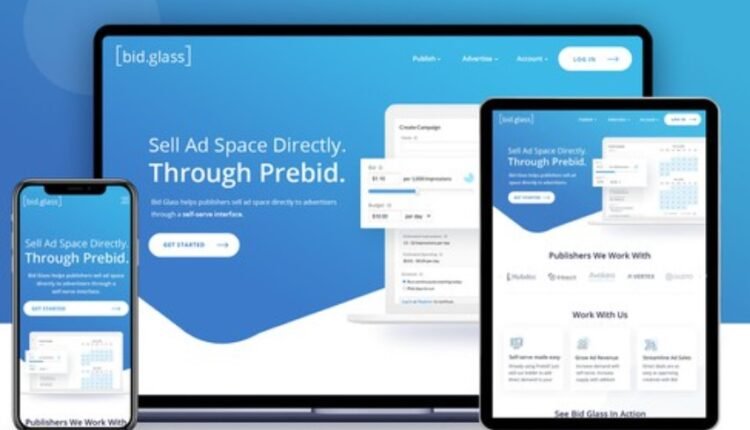An effective advertising website relies on achieving a delicate balance between captivating visuals and strategic content. To truly engage users, it’s crucial to create a site that not only showcases advertisements but also offers relevant and valuable information. By utilizing persuasive copy, striking design elements, and intuitive navigation, you can enhance the user experience and build a connection that drives conversions. Understanding your target audience and customizing the site’s features to meet their needs will ultimately boost engagement and ensure the success of your advertising efforts.
Key Features of an Ads Website
User-Friendly Interface
A fundamental aspect of an effective ads website is its user interface. The design should be clean and easy to navigate, ensuring that visitors can find the information they need without unnecessary complications. This includes clear categories for different types of advertisements, intuitive search functionalities, and a mobile-friendly layout that caters to users across devices. A well-structured interface not only improves the user experience but also encourages longer visits and higher engagement rates.
Targeted Advertising Options
One of the primary features of an ads website is the ability to offer targeted advertising options. This involves using data analytics to determine user preferences and behavior, allowing ads to be tailored to specific demographics. By providing advertisers with tools to define their target audience—based on parameters such as location, age, interests, and browsing behavior—you can create a more personalized experience for users, which can increase conversion rates and overall satisfaction.
Comprehensive Analytics
Incorporating robust analytics into your ads website is essential for tracking performance and understanding user interaction. Advertisers should have access to detailed reports that cover metrics such as impressions, clicks, conversion rates, and user activity. This data will allow them to adjust their campaigns effectively, ensuring their ads are reaching the right audience and achieving their desired results. Moreover, an analytics dashboard that is easy to understand can significantly enhance user satisfaction and retention.
Ad Variety
An effective ads website should provide a variety of ad formats to cater to different advertising goals. This could include display ads, video ads, native ads, and sponsored content. By offering diverse options, advertisers can choose the format that best aligns with their marketing strategy, effectively capturing audience attention. Furthermore, incorporating interactive elements, such as quizzes or clickable graphics, can enhance engagement and make ads more memorable.
Clear Call to Action
Every ad on your website should have a clear call to action (CTA) that directs users towards the next step, whether it be to make a purchase, sign up for a newsletter, or learn more about a product. A strong CTA not only encourages immediate actions but also contributes to achieving long-term objectives for advertisers. Phrasing the CTA in a compelling manner—using action-oriented language—can significantly increase conversion rates.
Best Practices for Creating an Effective Ads Website
Optimize for SEO
To ensure that your Ads website attracts traffic, optimizing it for search engines is crucial. This involves conducting keyword research to understand what your target audience is searching for and strategically placing those keywords throughout your site content. Meta descriptions, image tags, and alt text should also be optimized to improve visibility on search engine results pages. The better your website ranks for relevant keywords, the more organic traffic you will receive.
Regularly Update Content
Keeping your Ads website fresh with updated content is vital for retaining user interest and improving SEO. Regularly posting new articles, ads, and promotional offers can help maintain engagement levels and encourage repeat visits. In addition, featuring the latest trends and developments in the advertising industry can position your website as an authority in the field, building trust with users and advertisers alike.
Ensure Fast Load Times
Website performance has a significant impact on user experience. If your ads website takes too long to load, visitors may leave before they even see your content. Optimizing images, leveraging browser caching, and minimizing HTTP requests can help improve load times. Fast loading speeds not only enhance user satisfaction but also positively influence your website’s ranking on search engines.
Provide Excellent Customer Support
A critical component of any successful ads website is offering reliable customer support. Whether through live chat, email, or phone, providing immediate assistance to users can enhance their experience and foster loyalty. Addressing concerns or questions swiftly can mitigate potential frustrations and ensure that both advertisers and users feel valued.
Implement A/B Testing
To continuously improve your ads website, implementing A/B testing is essential. By creating variations of specific elements—such as ad placements, headlines, and CTAs—you can gather data on what resonates best with your audience. This iterative process allows you to make informed decisions based on real user interactions, ultimately leading to a more effective ads website.
Leverage Social Proof
Integrating social proof elements such as testimonials, case studies, and user reviews can greatly enhance the credibility of your ad’s website. Showcasing success stories from previous advertisers and highlighting satisfied users can build trust, making potential advertisers more likely to engage with your platform. Consider implementing customer logos, user-generated content, or award recognitions to further legitimize your offering.
Conclusion
In conclusion, building an effective ads website encompasses far more than simply displaying advertisements. By integrating key features such as a user-friendly interface, targeted advertising options, and detailed analytics while following best practices like SEO optimization and fast load times, you can create a successful platform that benefits both users and advertisers. Striving for continuous improvement and adaptation to current trends will ensure that your ads website remains competitive and relevant in a rapidly evolving digital landscape.


Comments are closed.